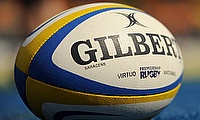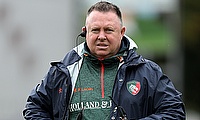Beneath the surface of the 2015/16 Aviva Premiership

The 2015/16 Aviva Premiership season promises to be another scorcher
©PA
The upcoming Rugby World Cup may be the focus of the rugby world right now, but that doesn’t mean we can’t have one eye already on the 2015/16 Aviva Premiership season.
With an increased salary cap and an extra marquee player spot available to all Premiership teams, not to mention a plethora of talented youngsters on the verge of breaking through, the looming Premiership season could be one of the best to date.
The influx of foreign players for the 2015/16 season has been steady, not reaching the levels of the Top 14, but certainly improving on what was already a formidable pool of talent in the division. For some teams however, this has resulted in them having a significantly smaller percentage of home-grown players in their squads.
After hours of scouring player profiles and press releases, we have ranked the Premiership teams on the percentage of English, or English-qualified, players they have in their squads for the 2015/16 season. For the purposes of this ranking, only players on full-time senior contracts were counted, whilst players who will become eligible for England during the 2015/16 season were considered English-qualified.
1. Northampton Saints (78.4%)
2. Bath Rugby (77.8%)
3. Harlequins (75.7%)
4. Exeter Chiefs (62.5%)
5. Saracens (59.5%)
6. Worcester Warriors (59.1%)
7t. Wasps (58.5%)
7t. Gloucester (58.5%)
9. London Irish (55%)
10. Sale Sharks (52.9%)
11. Leicester Tigers (51.2%)
12. Newcastle Falcons (42.9%)
These percentages, which on the surface may seem low, will likely be swelled over the course of the season as academy players make the breakthrough into the senior squads and are rewarded with senior contracts. That said, the overall percentage of English and English-qualified players in the Premiership this season will be just a shade over 60%, a figure which is relatively healthy and means there will be close to 300 players available to Stuart Lancaster on senior contracts in the Premiership this season.
Harlequins’ realisation that they cannot build a team solely from their own academy has seen them give up their long-term position at the top of these rankings, but they still come in at a very enviable third position. The Londoners have been bypassed by both Northampton and Bath who, in addition to producing plenty of their own talent, have become the best in the league at snapping up top English players from other Premiership clubs.
Worcester’s spot at 6th is noteworthy and would compare very favourably to the squad which London Welsh brought to the Premiership last season, whilst Wasps and Gloucester have welcomed a number of foreign players to the Ricoh Arena and Kingsholm over the last couple of years, distancing them both from their reputations as big contributors to the English national team.
Two teams whose percentages should soar come the season are Saracens and Sale. Both sides have a number of academy players verging on making their respective senior squads, many of whom will gain first XV exposure during the RWC period at the beginning of the season. Sale, who have the smallest squad in the Premiership with just 34 players on senior contracts, should see their percentage jump considerably when the likes of James Mitchell and Ciaran Parker step up this season.
Two figures which are particularly disappointing are those put up by Leicester and Newcastle. With just 42.9% of Newcastle’s senior squad qualified to play for England, they are the only side in the Premiership to fall below the 50% mark. Given that their best English players are often snapped up by bigger clubs (Kieran Brookes to Northampton, Dom Barrow to Leicester etc), the Falcons position is somewhat understandable, but the Tigers have no such excuse.
Renowned across the world and boasting a history as successful as any in England, Leicester’s academy has struggled to live up to its vaunted reputation in recent years, resulting in a senior squad which has largely been signed up from pastures further afield, rather than developed in the East Midlands. The future looks promising for the Tigers with a number of highly-touted prospects soon to be making the step up to the senior squad, but with just 51.2% of their 2015/16 squad available to England, it’s not an ideal situation for Leicester or Lancaster.
Quantity may not be a predictor of quality, but with Northampton, Bath, Exeter and Saracens all firmly entrenched towards the top of these rankings, their growing reputations as the backbone of the England squad should be reinforced this season. Meanwhile, the likes of Wasps, Leicester and Gloucester, sides who have traditionally been big contributors to the England squad, are in danger of losing those traits.
Overall, the numbers illustrate that the Premiership has developed a good balance between home-grown talent and foreign imports, but with growing pressure to increase the salary cap from some quarters, it’s a balance which will need to be carefully monitored over the coming years.









